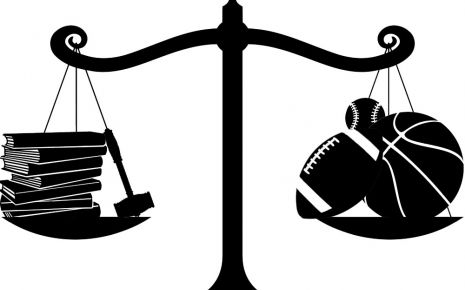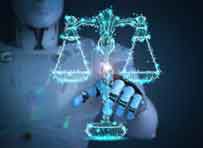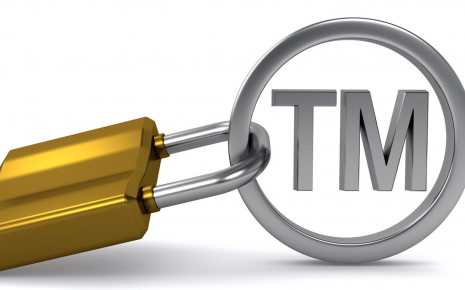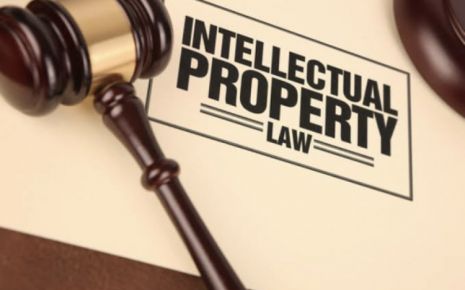Intellectual Property Rights In The Cyber Space
Intellectual Property Rights are the rights given to creators for their
original inventions or literary works. These rights can be used for monetary
gains from original creations and can protect their original work from being
copied or cheated at least. These rights are held by both individuals as well as
the companies. Intellectual property is divided into five categories:
Copyright protects only two rights of the creators
Intellectual property has migrated easily to the internet because of the digitalization of works that reduce text, visual images, and sound into computer-readable binary codes of '0's and '1's, which has led to the formation of digital products that can easily travel over the internet. Though this migration of intellectual property is visible all over the internet, it is predominantly seen in the case of copyright and trademarks. In the field of copyright, most works of literature, art, and files were already conveyed to the digital environment, and all the textual works are ideally more suited to digitalization as there is evidence of a growing demand for e-books.
There are numerous companies which depend on a business model and usually trade in physical objects of intellectual property. The online traders who utilize these vast databases of books, music videos, and useful user-friendly purchasing systems attract customers away from shopping malls, and then using customer postal mail, they send this intellectual property to the consumers.
The trademark system facilitates the identification of the goods and services and allows consumers to distinguish those produced by a certain enterprise. Consumers increasingly are relying on strong brand awareness and its performance on the internet so that they can confidently engage with e-commerce websites. Trademarks are not only of greater importance in this virtual environment but are also more vulnerable to infringement, dilution, and anticompetitive practices.
Domain names are user-friendly addresses as they correspond to the unique Internet Protocol numbers that connect our computers to the Internet and enable the network routing system to direct data requests to the correct addressee. Because domain names are instinctive and easy to remember, they now perform a function as business or personal identifiers. Businesses mostly advertise their domain name so that they can signal their Web presence. In this way, domain names perform an identifying function similar to that of a trademark.
Copyright is granted to creative work that is new to the market and excludes everyone who uses someone else's work. Infringement of copyright means when a person tries to use the original work of the creator without his permission or without paying charges for using his creations, distribute copies of the software, or unauthorizedly sell creations without the creator's permission.
Infringement also occurs when a person does illegitimate copying from websites or blogs.
Cybersquatting and Trademark Infringements:
A trademark is a unique identifier mark that can be represented through a graph, and the main idea behind this tactic is to differentiate the goods and services of one person from those of others. These unique identifier marks mostly include the shape of goods, their colour, or their packaging.
Cybersquatting:
It is a cybercrime in which a domain name is imitated in such a manner that the resultant domain can cheat the users of the original one with the intention of making a profit from the fake one. This can be done by registering, selling, or trafficking an original domain name so that they can earn profit from a popular domain name's goodwill by using a fake domain name.
Meta tagging:
It is a technique that is used to increase the number of users on the site. It basically includes a word or keyword that can be used to find the site by using a search engine, as it will pick up the word and direct the users to the site despite the fact that the site has nothing to do with that word, which may lead to trademark infringement.
In simple words, whenever a website contains the meta tags of other websites so that they can increase their users and earn profits from them, it may result in trademark infringement.
There are certain conditions that need to be fulfilled to prove that a domain name is abusive:
Conclusion
With the development of technology and innovation, it is important to protect sensitive data and information by taking stricter legal measures. As the cybercrimes are at an increase, it is important to enact new laws for benefit of masses as traditional regulations are not enough to protect users from cybercrimes. To protect the Global Trade and E-commerce, it is important to conduct an online import and export in a secure and protected atmosphere. Copyright content is mostly protected by an encryption or a cryptography or a digital signature, and digital watermark, so it becomes necessary to keep the track of all the details of the owners so that a fake site cannot use it for malicious purposes.
Written By: Tanya Khare, Student, Amity Law School Lucknow
- Patents
- Trademark
- Industrial Design
- Geographical Indication
- Copyright
- Patents and trademarks are used for protecting industrial inventions, whereas copyright is used to protect literary inventions. Though, the growth of technologies in the cyber world has benefited copyright and patent owners a lot every good innovation but also it has its own risk, and thus it is important to protect IPRs from cybercrime.
Types Of Intellectual Property
- Patents:
These rights are granted to the individual for an invention or creation of new ideas, technology, etc. It basically gives somebody the right to stop one from copying, selling, or manufacturing an original idea in someone else's name without the creator's permission.
Patents are given on the basis of a test of novelty. A test of novelty means when the creator proves that his creation is his original work and is purely innovative.
Patents are granted for a fixed period of time, and once the time period expires, they become free to use by the general public, and there is no need to pay fees for them. In India, the term of a patent is 20 years.
The Patents Act, 1970, governs the grant of patents in India.
- Trademark:
It is a distinctive mark that can be used to identify a manufacturer, a producer, or a service provider. These marks can be used in the form of a logo, a symbol, a sign, or a written name.
With the help of a trademark, consumers can easily associate a product with quality standards, and they can easily find their trusted product through a trademark.
A trademark is granted for a certain period of time but also can be renewed as long as the owner is paying charges in the concerned office.
A trademark protects the identity of a company only in the country in which it has been filed, but it can also be used in the international market if the owner registers with the World Intellectual Property Organisation (WIPO).
The India Trademark Act, 1999, governs the grant of the trademarks.
- Industrial design:
The visual aspects of the product, which can't be protected under the Patent Act, will be protected under industrial design.
It should be purely aesthetics and not utility; in other words, it should be non-functional in nature.
These designs should be new, which means that no similar design should exist on the market.
Example: Coca-Cola contour bottle
- Geographical Indication:
A geographical Indication popularly known as the 'GI Tags' simply indicates the place from which a certain product originates.
For example, Chikankari work from Lucknow is famous and has a GI tag.
An "Appellation of Origin" geographical indication can be used if a product can be produced in a specific region only.
For example: Bordeaux Wine
- Copyright:
These rights are granted mainly to artistic and literary works like films, music, literature, poetry, etc.
It also protects rights that come from creative creations, and these rights are called related rights.
Copyright protects works that can be expressed in tangible form.
For Example: Movies
Copyright protects only two rights of the creators
- Economic Rights: These are the rights granted to the creators so that they can enjoy the right to get financial benefit from the usage of their work by others.
- Moral rights: These rights are granted for non-economic benefit, for example, the right to claim authorship or the right to oppose changes to work, etc.
- In India, copyrights are granted for a person's lifetime and then 60 years after the death of the author or creator.
- In India, copyright is granted and governed under the Copyright Act, 1957.
Migration Of Intellectual Property On The Internet
The nature of the intellectual property is gradually developing. Intellectual property has been migrated to the internet and modified in such a way that it can suit an online environment. While the essence of the rights to control and exploit the products of the creator's creativity and innovation remains relatively constant, the manner in which they are expressed and exchanged is constantly adapting to developments in the underlying technologies.Intellectual property has migrated easily to the internet because of the digitalization of works that reduce text, visual images, and sound into computer-readable binary codes of '0's and '1's, which has led to the formation of digital products that can easily travel over the internet. Though this migration of intellectual property is visible all over the internet, it is predominantly seen in the case of copyright and trademarks. In the field of copyright, most works of literature, art, and files were already conveyed to the digital environment, and all the textual works are ideally more suited to digitalization as there is evidence of a growing demand for e-books.
There are numerous companies which depend on a business model and usually trade in physical objects of intellectual property. The online traders who utilize these vast databases of books, music videos, and useful user-friendly purchasing systems attract customers away from shopping malls, and then using customer postal mail, they send this intellectual property to the consumers.
The trademark system facilitates the identification of the goods and services and allows consumers to distinguish those produced by a certain enterprise. Consumers increasingly are relying on strong brand awareness and its performance on the internet so that they can confidently engage with e-commerce websites. Trademarks are not only of greater importance in this virtual environment but are also more vulnerable to infringement, dilution, and anticompetitive practices.
Domain names are user-friendly addresses as they correspond to the unique Internet Protocol numbers that connect our computers to the Internet and enable the network routing system to direct data requests to the correct addressee. Because domain names are instinctive and easy to remember, they now perform a function as business or personal identifiers. Businesses mostly advertise their domain name so that they can signal their Web presence. In this way, domain names perform an identifying function similar to that of a trademark.
Challenges Faced In Protection Of Ipr In Cyber Laws
Copyright infringement:Copyright is granted to creative work that is new to the market and excludes everyone who uses someone else's work. Infringement of copyright means when a person tries to use the original work of the creator without his permission or without paying charges for using his creations, distribute copies of the software, or unauthorizedly sell creations without the creator's permission.
Infringement also occurs when a person does illegitimate copying from websites or blogs.
- Linking
- Framing:
- Software Piracy:
It refers to the use of software that is not properly licensed. It simply refers to the making of unauthorized copies of computer software that are not protected under the Copyright Act of 1957
- Soft lifting: Soft lifting simply means when a person shares a programme with an unauthorized person without a license agreement to use it.
- Duplicates: When duplicate copies of software are made, imitated, and sold at a lower price than the original, this is referred to as software counterfeiting. This includes providing the box, CDs, and manuals.
- Renting: It means when a copy of software is rented to someone without the permission of the copyright holder, which violates the license agreement of the software.
Cybersquatting and Trademark Infringements:
A trademark is a unique identifier mark that can be represented through a graph, and the main idea behind this tactic is to differentiate the goods and services of one person from those of others. These unique identifier marks mostly include the shape of goods, their colour, or their packaging.
Cybersquatting:
It is a cybercrime in which a domain name is imitated in such a manner that the resultant domain can cheat the users of the original one with the intention of making a profit from the fake one. This can be done by registering, selling, or trafficking an original domain name so that they can earn profit from a popular domain name's goodwill by using a fake domain name.
Meta tagging:
It is a technique that is used to increase the number of users on the site. It basically includes a word or keyword that can be used to find the site by using a search engine, as it will pick up the word and direct the users to the site despite the fact that the site has nothing to do with that word, which may lead to trademark infringement.
In simple words, whenever a website contains the meta tags of other websites so that they can increase their users and earn profits from them, it may result in trademark infringement.
There are certain conditions that need to be fulfilled to prove that a domain name is abusive:
- A domain name is said to be abusive if it misguides the consumers from the original website to a fake website that is made with the ill intention of gaining profit by diverting users from the original website.
- If the person who is the registrant of the original site has no legal rights to the domain name or has no interests in the domain name.
- Last but not least, if the domain name is used in bad faith.
Indian Laws On IPR
- Section 51 of the Copyrights Act, 1957: This section states that works
like literature, drama, music or art should not be reproduced in the form of
a cinematography and if they are reproduced there must be the consent of the
creator if the consent is not taken beforehand then this will lead to the
infringement of copyright.
- Section 79 of the Information Technology Act, 2000: This section states that the online intermediaries can exempt themselves from the civil and criminal liability as this section makes them non-liable for any third-party content posted on their site.
Conclusion
With the development of technology and innovation, it is important to protect sensitive data and information by taking stricter legal measures. As the cybercrimes are at an increase, it is important to enact new laws for benefit of masses as traditional regulations are not enough to protect users from cybercrimes. To protect the Global Trade and E-commerce, it is important to conduct an online import and export in a secure and protected atmosphere. Copyright content is mostly protected by an encryption or a cryptography or a digital signature, and digital watermark, so it becomes necessary to keep the track of all the details of the owners so that a fake site cannot use it for malicious purposes.
Written By: Tanya Khare, Student, Amity Law School Lucknow
Law Article in India
Legal Question & Answers
Lawyers in India - Search By City
LawArticles
How To File For Mutual Divorce In Delhi

How To File For Mutual Divorce In Delhi Mutual Consent Divorce is the Simplest Way to Obtain a D...
Increased Age For Girls Marriage

It is hoped that the Prohibition of Child Marriage (Amendment) Bill, 2021, which intends to inc...
Facade of Social Media

One may very easily get absorbed in the lives of others as one scrolls through a Facebook news ...
Section 482 CrPc - Quashing Of FIR: Guid...

The Inherent power under Section 482 in The Code Of Criminal Procedure, 1973 (37th Chapter of t...
The Uniform Civil Code (UCC) in India: A...

The Uniform Civil Code (UCC) is a concept that proposes the unification of personal laws across...
Role Of Artificial Intelligence In Legal...

Artificial intelligence (AI) is revolutionizing various sectors of the economy, and the legal i...








Please Drop Your Comments